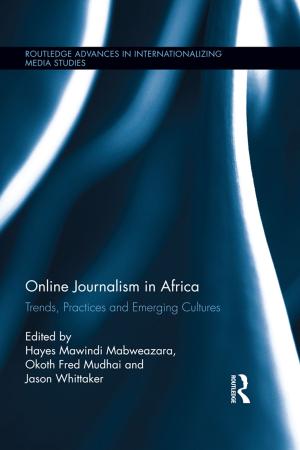Volume 1, Tome II: Kierkegaard and the Bible - The New Testament
Nonfiction, Religion & Spirituality, Philosophy| Author: | Lee C. Barrett | ISBN: | 9781351875479 |
| Publisher: | Taylor and Francis | Publication: | December 5, 2016 |
| Imprint: | Routledge | Language: | English |
| Author: | Lee C. Barrett |
| ISBN: | 9781351875479 |
| Publisher: | Taylor and Francis |
| Publication: | December 5, 2016 |
| Imprint: | Routledge |
| Language: | English |
Exploring Kierkegaard's complex use of the Bible, the essays in this volume use source-critical research and tools ranging from literary criticism to theology and biblical studies, to situate Kierkegaard's appropriation of the biblical material in his cultural and intellectual context. The contributors seek to identify the possible sources that may have influenced Kierkegaard's understanding and employment of Scripture, and to describe the debates about the Bible that may have shaped, perhaps indirectly, his attitudes toward Scripture. They also pay close attention to Kierkegaard's actual hermeneutic practice, analyzing the implicit interpretive moves that he makes as well as his more explicit statements about the significance of various biblical passages. This close reading of Kierkegaard's texts elucidates the unique and sometimes odd features of his frequent appeals to Scripture. This volume in the series devotes one tome to the Old Testament and a second tome to the New Testament. As with the Old Testament, Kierkegaard was aware of new developments in New Testament scholarship, and troubled by them. Because these scholarly projects generated alternative understandings of the significance of Jesus, they impinged directly on his own work. It was crucial for Kierkegaard that Jesus is presented as both the enactment of God's reconciliation with humanity and as the prototype for humanity to emulate. Consequently, Kierkegaard had to struggle with the proper way to explicate persuasively the significance of Jesus in a situation of decreasing academic consensus about Jesus. He also had to contend with contested interpretations of James and Paul, two biblical authors vital for his work. As a result, Kierkegaard ruminated about the proper way to appropriate the New Testament and used material from it carefully and deliberately. The authors in the present New Testament tome seek to clarify different dimensions of Kierkegaard's interpretive theory and practice as he sought to avoid the twin pitfalls of academic skepticism and passionless biblical traditionalism.
Exploring Kierkegaard's complex use of the Bible, the essays in this volume use source-critical research and tools ranging from literary criticism to theology and biblical studies, to situate Kierkegaard's appropriation of the biblical material in his cultural and intellectual context. The contributors seek to identify the possible sources that may have influenced Kierkegaard's understanding and employment of Scripture, and to describe the debates about the Bible that may have shaped, perhaps indirectly, his attitudes toward Scripture. They also pay close attention to Kierkegaard's actual hermeneutic practice, analyzing the implicit interpretive moves that he makes as well as his more explicit statements about the significance of various biblical passages. This close reading of Kierkegaard's texts elucidates the unique and sometimes odd features of his frequent appeals to Scripture. This volume in the series devotes one tome to the Old Testament and a second tome to the New Testament. As with the Old Testament, Kierkegaard was aware of new developments in New Testament scholarship, and troubled by them. Because these scholarly projects generated alternative understandings of the significance of Jesus, they impinged directly on his own work. It was crucial for Kierkegaard that Jesus is presented as both the enactment of God's reconciliation with humanity and as the prototype for humanity to emulate. Consequently, Kierkegaard had to struggle with the proper way to explicate persuasively the significance of Jesus in a situation of decreasing academic consensus about Jesus. He also had to contend with contested interpretations of James and Paul, two biblical authors vital for his work. As a result, Kierkegaard ruminated about the proper way to appropriate the New Testament and used material from it carefully and deliberately. The authors in the present New Testament tome seek to clarify different dimensions of Kierkegaard's interpretive theory and practice as he sought to avoid the twin pitfalls of academic skepticism and passionless biblical traditionalism.















